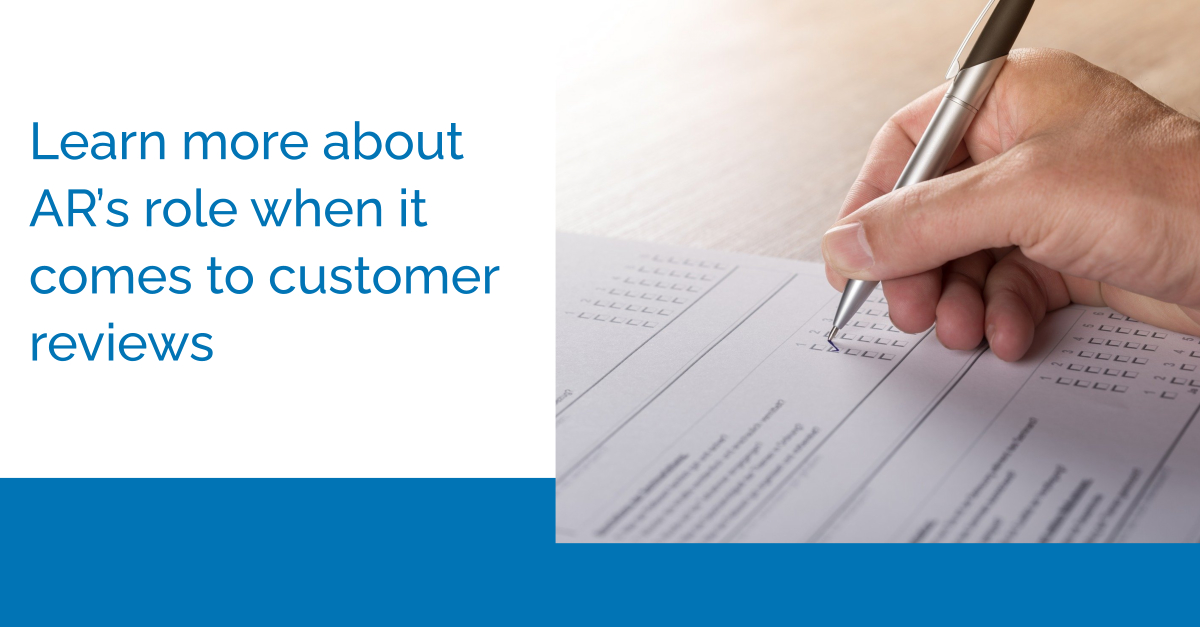At ARInsights, we host “open sessions” for our clients on a quarterly basis. During those sessions, we all come together virtually to discuss trending topics in the analyst relations (AR) community – whatever is on clients’ minds! It’s an opportunity to ask questions of other professionals in the field, swap stories and discuss what’s making your program “tick,” all in an informal (and unrecorded) setting.
Conversation in our most recent session centered on peer review sites and specifically, Gartner Peer Insights. AR community members discussed:
- Key strategies when engaging with peer review sites
- Who “owns” helping drive customer reviews (cross-department collaboration usually needed)
- How to balance customer review requests with other customer asks
- Differences among various peer review sites
- Recent changes to them
While we’re not recapping the open session conversation here, we thought it would be useful to discuss peer review sites and user reviews since they’re important to the AR community.
The Importance of User Reviews
Reviews have a large impact on B2C buying decisions. For example, we all probably rely on Amazon stars and reviews when comparing and mulling over products. It’s no surprise, then, that reviews play a huge role in enterprise B2B purchasing decisions as well. In fact, G2 reports that 92% of buyers are more likely to purchase a product or service after they’ve read a trusted review about it.
It can greatly benefit your AR program, and business in general, if your company has a strategy for engaging with customer review sites such as G2, PeerSpot, TrustRadius and Gartner Peer Insights (helping to drive and monitor reviews, and use them to increase visibility and conversions). This might be owned by product marketing, customer marketing or customer success, with collaboration from AR.
In fact, to help both AR and customer marketing professionals monitor and report on customer sentiment, as well as identify brand advocates (as well as detractors), ARInsights incorporated user review data from G2 and PeerSpot into our Premium Content solution (see press release).
Because Gartner Peer Insights was such a hot topic in our recent session (and is closely intertwined with Gartner’s research), let’s explore that platform more closely.
What is Gartner Peer Insights?
Gartner Peer Insights is a peer-driven ratings and reviews platform for enterprise IT solutions and services, covering over 300 technology markets and 3,000 vendors. Gartner has practices in place to verify user reviews before publishing them to guarantee authenticity. The platform is free and available to the public. Reading the full details of reviews requires a login (Gartner clients can use their Gartner credentials).
While AR departments may not have traditionally played a large role in engaging with peer reviews sites, Gartner Peer Insights does require AR attention. Peer Insights is unique among other peer review sites in that the information is factored into Gartner’s research, including Magic Quadrants and other reports. In fact, Gartner has been able to generate a high volume of reviews in just a few years by repurposing the vendor reference surveys completed as part of Magic Quadrant evaluations.
Although some analysts are using Peer Insights more than others in their research, Gartner has stated on several occasions that Peer Insights will eventually replace vendor reference surveys, and include confidential survey questions shared only with analysts. Because of Peer Insights’ close ties to influential reports, using and engaging with the platform requires some strategy, and it’s useful to have insights into how reviews are evaluated.
How are reviews approved and assessed?
Gartner’s moderation team takes up to 3 business days to process a customer review, conclude if it is approved, and alert the reviewer of approval or changes needed. The number of submitted reviews and your approved review count may not match (for example, if a reviewer has reviewed you more than once, and it’s considered a duplicate). During our open session call, some participants mentioned that customer reviews have disappeared from Gartner’s platform. Due to review expiration and moderation methodology adjustments, keeping a spreadsheet of your reviews and dates can be useful to cross-reference.
Gartner recently announced that it benefits you to have your customers update their reviews on a periodic basis and to reflect their current experiences with your company.
Because the methodology for when a review expires is still evolving, be sure to have your most important reviews updated, and campaign once more to those reviewers. This may also be valuable because reviews submitted prior to the last year also carry no weightage in any research report or Customer Choice recognition. If some of your more dated reviews are the most significant to a product or a market, it may be wise to reach out to those initial reviewers for a refresh. The good news is that updating reviews is pretty simple, so it won’t take as much of their time.
How are analysts involved in Gartner Peer Insights? And how do reviews factor into analyst research?
Analysts give input into defining the surveys that end-users fill out on Gartner Peer Insights at a broad level. Analysts are also using Peer Insights as a key source of information, among others, when conducting research of their own. As mentioned, Gartner has stated that Peer Insights will replace vendor references for MQs and will be quoted in published research, presentations and client interactions in the future.
While Peer Insights will be a variable in Gartner evaluations, Gartner analyst opinions are forward-looking and Peer Insights (because reviews are based on past experiences) cannot accomplish that. Gartner is also using Peer Insights reviews to produce Voice of the Customer reports (more on that below).
What should my role as an AR professional be, with regards to Peer Insights?
Because Peer Insights can influence and impact Gartner research (and impact buyers’ decisions), creating a strategy to address the platform, likely with your customer or product marketing or other relevant team, can greatly benefit your AR program.
During our open session, there was some debate over whether peer review site strategies are an AR function and overall, they normally fall within a customer marketing (or success) team’s responsibilities. Still, given the close ties to Gartner research and impact of reviews, AR should be — and often is — more frequently involved in:
- Helping determine which customers to approach for Peer Insights reviews.
- Monitoring reviews.
- Helping flag reviews for recategorization (for example, if the end-user incorrectly classified the product market). Correct categorization can benefit you if you are hoping to get included on a Voice of the Customer report (see below), where your company will need at least 20 reviews for a given market. The Gartner moderation team’s main focus is on validity of reviews, rather than classifications, so this responsibility will fall on you or your company.
- Collecting and storing reviews. Also, if end-users have posted valuable reviews that don’t fall into a predefined Gartner category (marked as “other”), save them. They can be valuable if there is an MQ (or other research) down the line and can also help analysts build a case for an MQ.
What are Voice of the Customer reports?
The Voice of the Customer (VoC) report is a research document that looks at Peer Insights’ content over an 18-month period in a specific market. It looks similar to an MQ and has been used by vendors as a marketing tool to generate leads and create visibility. Vendors in the VoC are categorized into four quadrants with “Review Coverage” as the X-axis and “Overall Rating” as the Y-axis.
Starting in May 2021, there will be a few updates made to the VoC report methodology. On the Y-axis, ratings will factor in newer reviews more heavily — those from the last 0-12 months will be weighted at 100%, while reviews that are 12-18 months old will only weigh at 50%.
On the X-axis, “Review Coverage” will be replaced with “User Interest & Adoption,” and there are three variables to this score:
- Review volume
- Willingness to recommend
- Review market coverage
Willingness to recommend is evaluated by calculating answers to the question, “How likely are you to recommend this product to a friend or colleague?” on a rating scale similar to an NPS score. Review market coverage is determined by counting the number of industry types, company sizes and deployment regions where a vendor has at least 5 reviews.
Final Thoughts
We hope this exploration of peer review sites and, specifically, Gartner Peer Insights has been helpful! If you would like to discuss this topic further, please feel free to reach out to support@arinsights.com.




